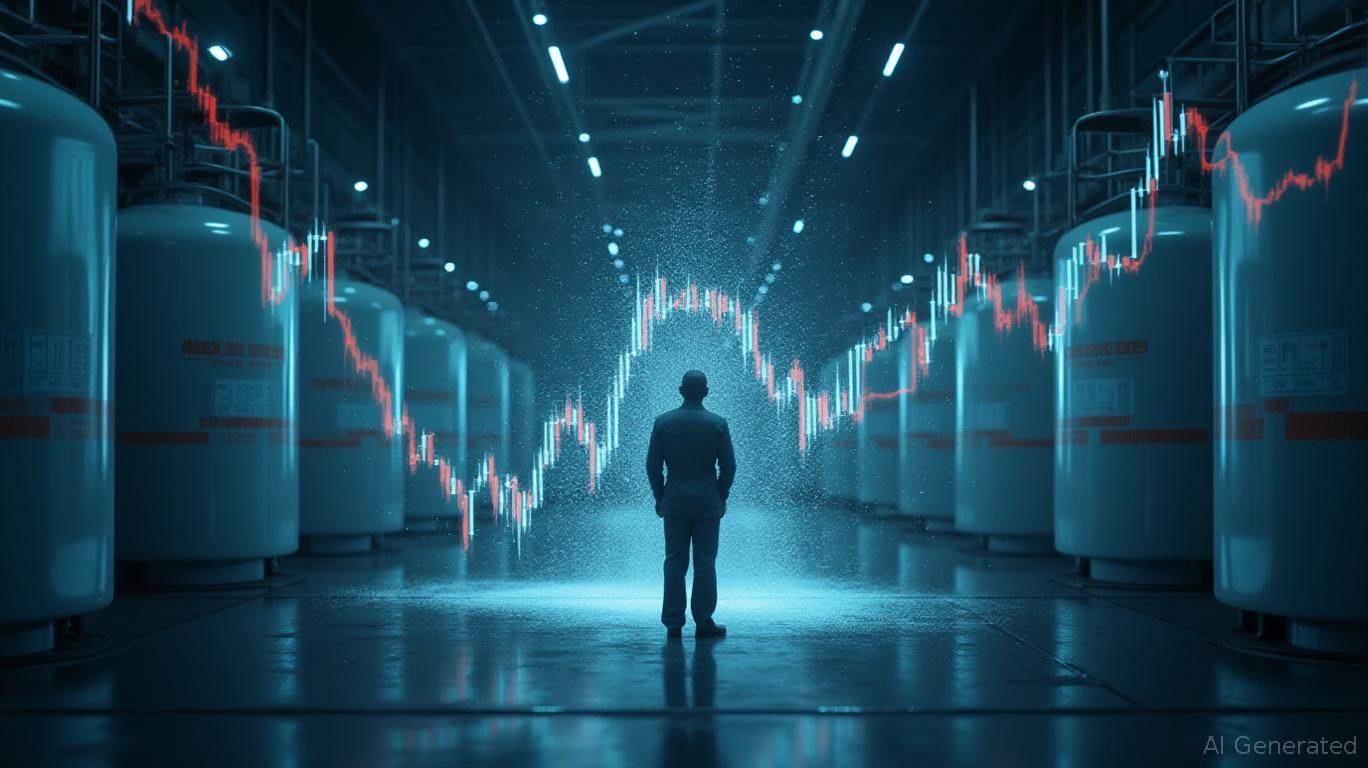UNG: A Volatility Trader's Playbook for Natural Gas Spikes
Natural gas markets are inherently volatile, swinging between extremes of scarcity and surplus depending on weather, geopolitics, and supply chain dynamics. For traders looking to capitalize on these swings, the United States Natural Gas Fund (UNG) offers a direct lever into this commodity. But
is a tool best wielded with precision: its design as a short-term trading vehicle is underscored by structural flaws that make it dangerous for long-term holds. Here's how to use it strategically—and avoid its pitfalls.
UNG's Strength: Seizing Short-Term Spikes
UNG tracks the price of Henry Hub natural gas futures, making it a real-time proxy for the commodity's fluctuations. Its value lies in its ability to amplify exposure to seasonal demand (e.g., winter heating spikes) or supply disruptions (e.g., geopolitical events). For example:
- In March 2025, UNG surged to a $24.09 intraday high (its highest since 2024) amid fears of Middle Eastern LNG shortages due to Iran-Israel tensions.
- In December 2024, prices plunged to a 2024 low of $12.48, reflecting oversupply concerns—a swing of nearly 90% in six months.
These extremes highlight UNG's role as a volatility amplifier, rewarding traders who can time entries before key events like EIA inventory reports or geopolitical flare-ups.
Technical Indicators: Resistance Levels and Volatility
Technical analysis is critical for timing UNG trades. Key metrics from recent performance include:
1. Resistance Levels:
- The $24.00 barrier (April 2025 high) remains a key ceiling. A sustained breakout here would signal a new bullish phase.
- The $16.00–$17.00 range (June 2025 lows) acts as support, with volume spikes (e.g., 25 million shares on Feb 19, 2025) often marking turning points.
- Volatility Metrics:
- UNG's daily price swings reached $2.37 (April 2025), nearly 15% of its then-price.
- Daily percentage changes can exceed ±10%, as seen in March 2025's +14.7% single-day surge.
Traders should use these metrics to set tight stop-losses and profit targets. For instance, a long position near $16.00 with a $24.00 target would aim for a 43% return—a high-risk, high-reward proposition.
Drawbacks for Long-Term Holds: Contango and Fees
UNG's structure makes it a death trap for buy-and-hold investors. The ETF's futures-based strategy grinds against two headwinds:
1. Contango Roll Costs:
- Natural gas futures often trade in contango (far-month contracts cost more than near-month). UNG must “roll” its positions monthly, selling expiring contracts at lower prices and buying more expensive replacements. This erodes returns over time, even if the spot price rises slightly.
- High Fees and Decay:
- UNG's expense ratio of 0.85% is steep, but the bigger issue is time decay. Leveraged ETFs (like BOIL/KOLD) suffer compounding losses, but even UNG's non-leveraged structure loses ground due to roll costs.
For example:
- A $100 investment in UNG on Jan 1, 2024, would have been worth just $107 by July 2025—a meager return despite natural gas's volatility.
The Playbook: How to Trade UNG Strategically
- Seasonal Timing:
Buy in late summer/early fall ahead of winter heating demand. Avoid spring/summer, when mild weather often drags prices down.
Event-Driven Trading:
- EIA Reports: Monitor weekly storage data. A surprise drawdown (e.g., below -50 BCF) can trigger a UNG rally.
Geopolitical Risks: Middle Eastern conflicts or LNG export disruptions (e.g., Russia's actions) create short-term spikes.
Technical Triggers:
- Bullish Signal: A break above $24.00 (April 2025 high) with high volume signals a potential $26–$28 target.
Bearish Signal: A sustained drop below $16.00 (June .2025 lows) may signal a move to $14.00, as seen in late 2024.
Position Sizing:
- Use no more than 2–5% of a portfolio to limit risk. Pair with stop-losses 5–10% below entry prices.
Conclusion: UNG's Role in a Volatility-Driven World
UNG is not an investment—it's a scalpel for traders willing to accept high risk for high reward. Its value lies in its ability to capture fleeting opportunities, whether from winter demand or geopolitical shocks. But for long-term investors, UNG is a trap: contango and fees ensure that holding it for months or years will almost certainly underperform a direct natural gas futures position.
Final Advice:
- Use it for 1–3 month trades, anchored to specific catalysts.
- Avoid it for anything longer—the decay compounds too quickly.
- Pair with technical analysis: Resistance levels and volatility metrics are your guides.
In a world where natural gas prices swing like a pendulum, UNG is the tool to catch the swings—but only if you're ready to let go before the pendulum swings back.
Sign up for free to continue reading
By continuing, I agree to the
Market Data Terms of Service and Privacy Statement

Comments
No comments yet